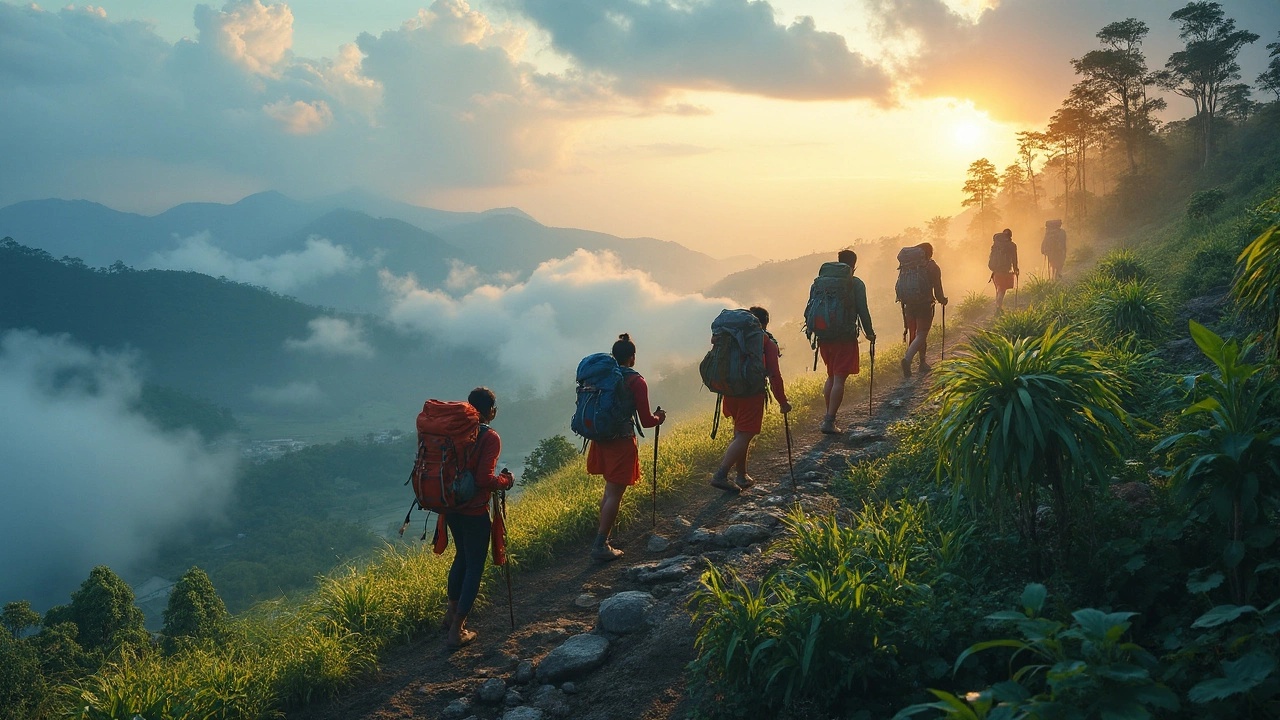SEARCH
Body Changes While Trekking: What to Expect and How to Prepare
Ever wondered why you feel sore, light‑headed, or surprisingly energized after a long trek? Your body goes through a series of real, measurable changes the moment you start walking uphill. Understanding those shifts helps you enjoy the journey rather than battling unexpected fatigue.
How Trekking Affects Your Body
First off, your muscles start adapting. The calves, quads, and glutes work harder on uneven terrain, so they grow stronger and more resistant to fatigue. That’s why beginners often notice a quick increase in leg power after just a few days of walking.
At the same time, your heart and lungs get a workout. Elevation forces them to supply oxygen more efficiently, which raises your resting heart rate for a short period. You’ll notice you can climb steeper sections without gasping as quickly as before.
Altitude also triggers a hormone called erythropoietin (EPO). EPO tells your bone marrow to make more red blood cells, improving oxygen transport. The effect isn’t instant, but after a few days above 2,500 m you may feel less short‑of‑breath.
While you’re building strength, you’re also losing water weight. Sweating on a hot trail can take out a liter or more each hour, so dehydration is a constant risk. Dehydration makes you feel dizzy, cramps your muscles, and slows recovery.
Nutrition shifts as well. Your body burns more carbs for quick energy while also tapping into fat stores for endurance. A balanced mix of carbs, protein, and healthy fats keeps you from hitting the dreaded “energy wall.”
Practical Tips to Manage Changes
Start with a simple hydration plan: drink 500 ml of water every hour you walk, and top it up with an electrolyte drink if you sweat heavily. Carry a reusable bottle; it’s easier to keep track.
Fuel your muscles with easy carbs like dried fruit, energy bars, or a banana every 30 minutes. Pair those carbs with a small amount of protein—think nuts or a jerky strip—to support muscle repair.
Give your body time to adjust to altitude. If you’re above 2,000 m, spend an extra night at the same height before pushing higher. This “rest day” lets your blood count rise naturally and reduces the chance of acute mountain sickness.
Stretching isn’t just for yoga fans. Spend five minutes after each day loosening calves, hamstrings, and hips. A quick foam‑roller session can also smooth out sore spots and improve circulation.
Finally, listen to your body. If you feel light‑headed, slow down, sip water, and snack on carbs. Persistent headaches or nausea may signal altitude issues—descend a bit and rest.
By knowing what’s happening inside you, you turn those inevitable body changes into clear signals you can act on. The result? A stronger, healthier trek without the guesswork.

Trekking in India: How Your Body Reacts and Benefits
Trekking in India isn't just an adventure for the soul; it's a workout for your body too. As you explore the stunning landscapes of India on foot, your body undergoes several changes, adapting and building strength. From altitude challenges to cardiovascular benefits, trekking offers unique physical perks. Here’s what you might experience on your trek, plus some tips to maximize your adventure.
Continue reading